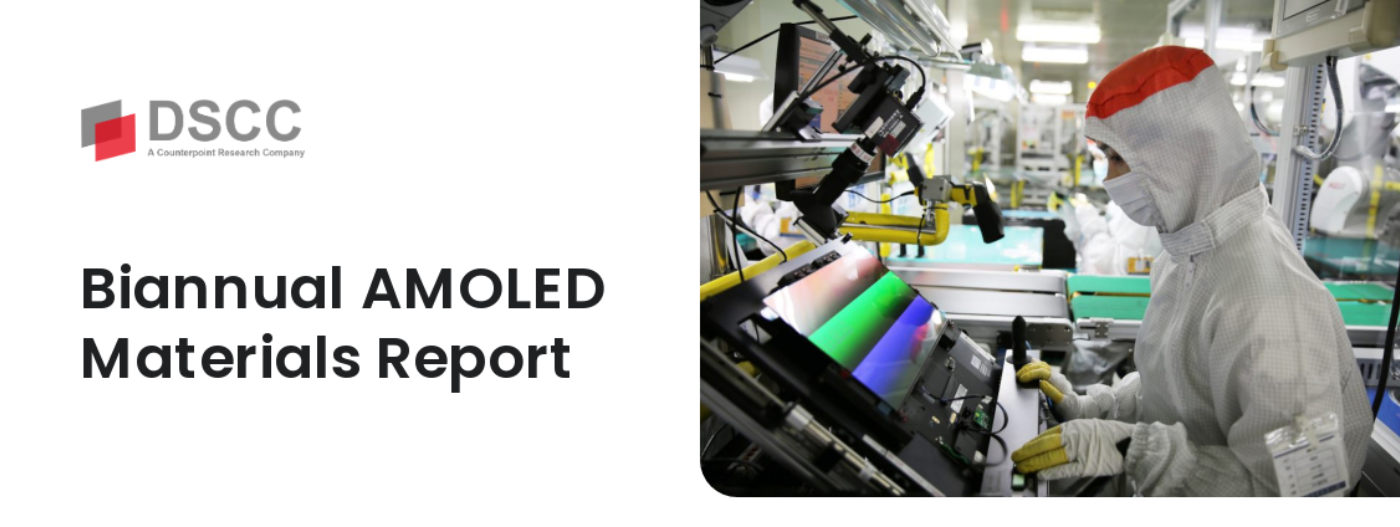LG Display、タンデム構造の青色燐光OLEDパネルを開発
関連調査レポート Biannual AMOLED Materials Report の詳細仕様・販売価格・一部実データ付き商品サンプル・WEB無料ご試読は こちらから お問い合わせください。
これらDSCC Japan発の分析記事をいち早く無料配信するメールマガジンにぜひご登録ください。ご登録者様ならではの優先特典もご用意しています。【簡単ご登録は こちらから 】
冒頭部和訳
LG Displayが青色燐光を使用したOLEDパネルの開発に成功したことを韓国のEtnewsが報じている。青色燐光は効率に優れているものの開発が難しく、これまで実用化されていなかった。今回の進展はOLED技術における大きな前進と見なされている。
OLED材料は燐光または蛍光のいずれかで発光が可能である。理論上、燐光は電気エネルギーのほぼ100%を光に変換できる一方、蛍光では変換率が25%程度にとどまる。これまで、OLEDパネルでは赤色と緑色に燐光材料が、青色には蛍光材料が使用されてきた。
LG Display Develops Blue Phosphorescent OLED Panel with Tandem Structure
According to South Korea’s Etnews, LG Display has successfully developed an OLED panel utilizing blue phosphorescence. While blue phosphorescence offers excellent efficiency, its development has been challenging, and it has not been commercialized until now. This breakthrough is considered a significant advancement in OLED technology.
OLED materials can emit light through either phosphorescence or fluorescence. In theory, phosphorescence can convert nearly 100% of electrical energy into light, whereas fluorescence achieves only about 25%. Until now, OLED panels have used phosphorescent materials for red and green colors, while blue has been implemented using fluorescent materials.
For several years, panel and material companies have been working to apply phosphorescence to blue, but commercialization has been delayed due to the shorter lifespan of blue phosphorescent materials compared to conventional blue fluorescent material. LG Display appears to have overcome this challenge by employing a tandem structure that involves stacking two layers of red, green and blue OLED light-emitting layers, which increases both efficiency and lifespan. Specifically, they used a "hybrid" method that combines fluorescent and phosphorescent materials in tandem structure to achieve a lifespan comparable to existing OLEDs with fluorescent blue materials, while also benefiting from the high efficiency of phosphorescent materials, according to Etnews.
The exact technology used in the first and second blue stacks of the tandem structure remains unclear. The blue stack structure may involve both fluorescence and phosphorescence for each stack, or it could incorporate HF (Hyperfluorescence) technology, as referenced in last week’s keynote at the K-Display business forum by SDC.
Regarding the commercialization timeline, UDC aims to achieve it by the end of 2024, but has recently noted that it might take slightly longer. SDC has not specified an exact production date in its recent announcements. Etnews reported that LGD plans to begin production evaluations this year and is considering product development. This suggests that products featuring blue phosphorescence could be available as early as 2025. The initial applications might include smartwatches, foldable sub-displays and notebooks, although specific details have yet to be confirmed.
If blue phosphorescence is commercialized, power consumption is expected to improve significantly. With the growing demand for on-device AI in modern devices, the need for blue phosphorescent OLEDs is increasing. Consequently, competition among panel manufacturers to release the first OLED product with blue phosphorescence is expected to be intense.
関連調査レポート Biannual AMOLED Materials Report の詳細仕様・販売価格・一部実データ付き商品サンプル・WEB無料ご試読は こちらから お問い合わせください。


